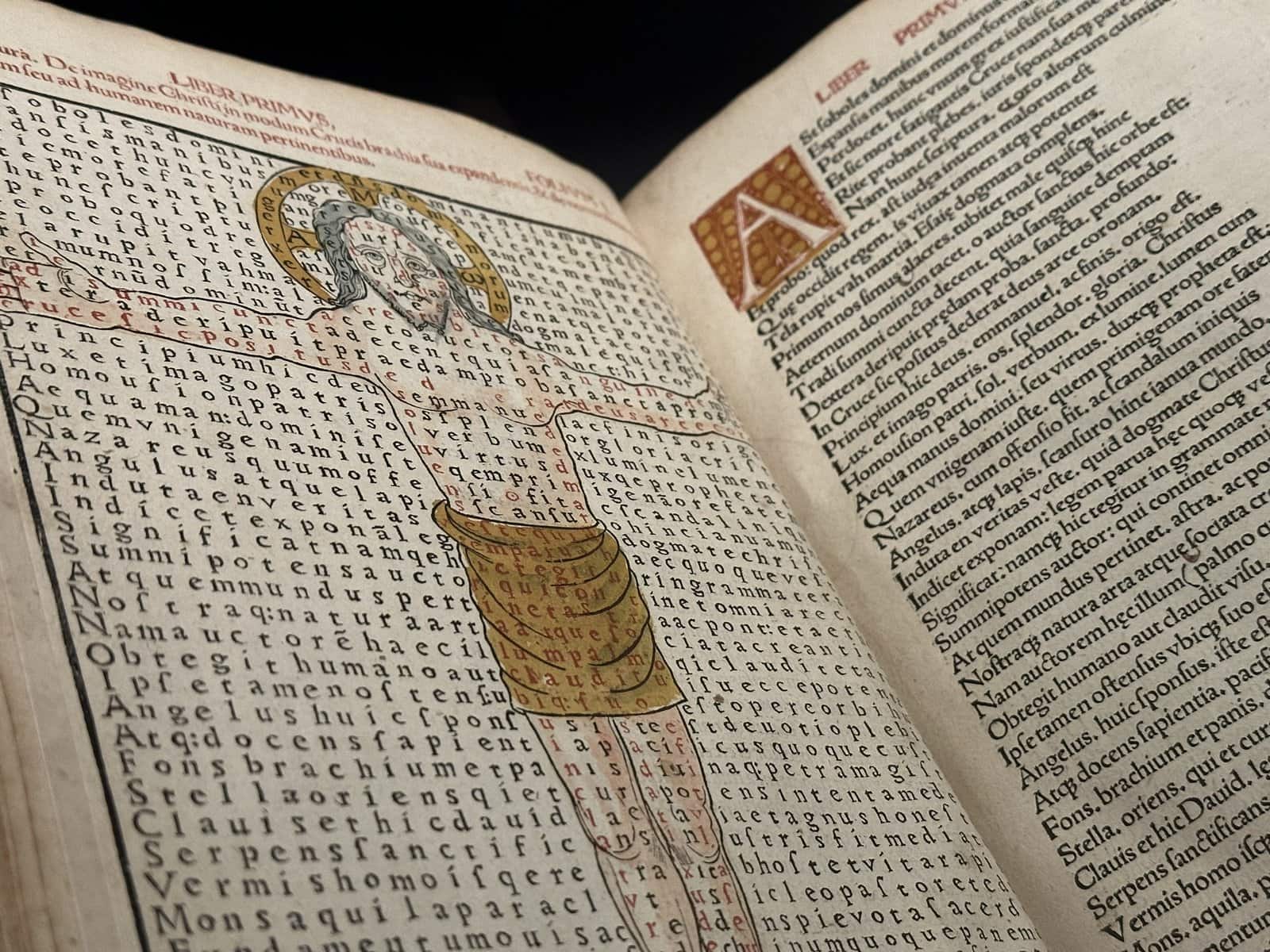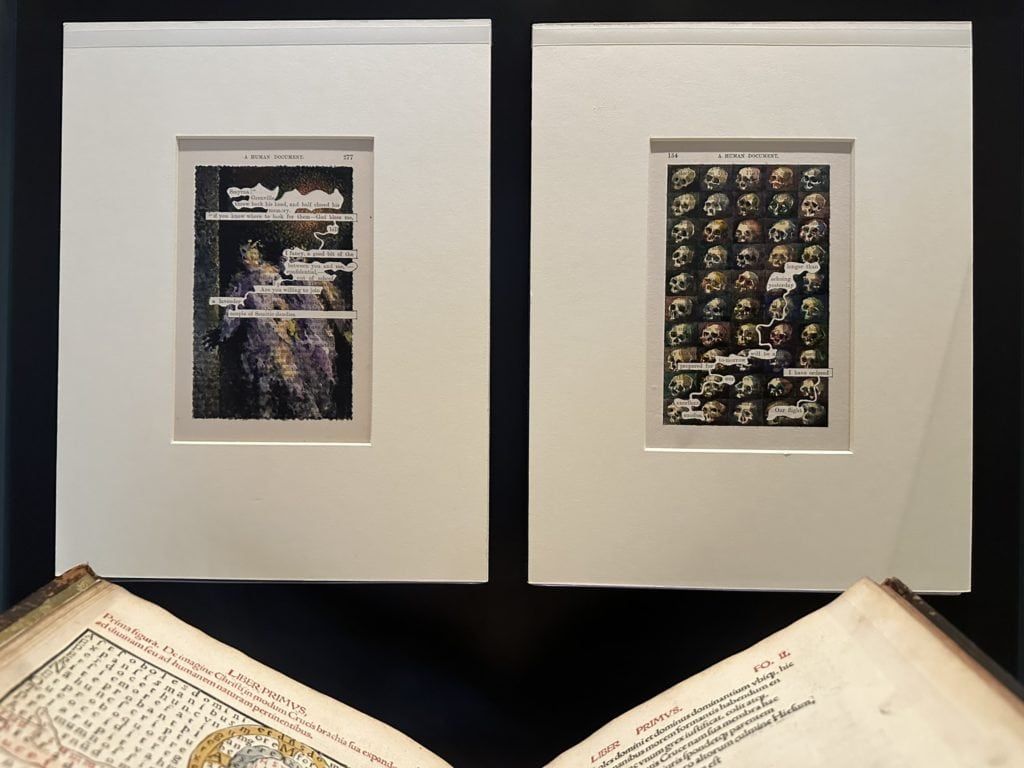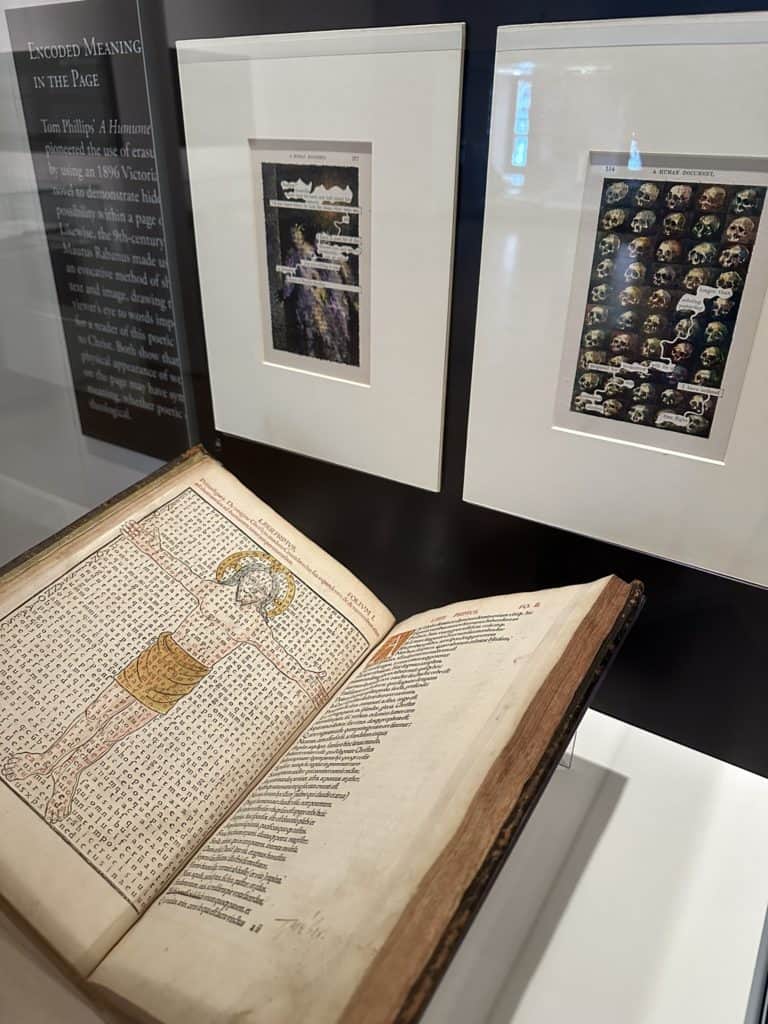
Items:
- Plates from A Humument. (Left:) Third Revision, ca. 1998. (Right:) Fifth Revision, ca. 2012. Tom Phillips. London, United Kingdom. The Ruth and Marvin Sackner Archive of Concrete and Visual Poetry.
- Magnencij Rabani Mauri De Laudib[us] sancte Crucis opus. erudicione versu prosaq[ue] mirificum. Rabanus Maurus. Pforzheim: Thomas Anshelm, 1503. x-Collection FOLIO [VAULT PA8330.H8 A6].
From co-curator Eric Ensley:
In a 2016 interview when asked why he made A Humument, Tom Phillips responded: “It’s inexhaustible when you find a big text that’s full of words to find other things in it.” Phillips spent nearly fifty years devoting himself to finding new meanings in those words. The 9th-century monk Rabanus Maurus, whose In Honorem Sanctae Crucis is also shown here also devoted his life to writing words in praise of Christ. Like Phillips, Maurus devoted himself to the word, even picturing himself kneeling before the cross in the final text-image of the book.
From co-curator Emily Martin:
Tom Phillips’ A Humument pioneered the use of erasures by using an 1896 Victorian novel to demonstrate hidden possibility within a page of text. Phillips made a number of versions of A Humument and they became a part of the Ruth and Marvin Sackner Archive of Concrete and Visual Poetry, which is now a part of the holdings of the University of Iowa Libraries Special Collections & Archives. Concrete poetry is defined as poetry in which the meaning or effect is presented partly or fully by visual means.

Plates from A Humument. (Left:) Third Revision, ca. 1998. (Right:) Fifth Revision, ca. 2012. Tom Phillips. London, United Kingdom. The Ruth and Marvin Sackner Archive of Concrete and Visual Poetry. Special Collections & Archives, University of Iowa Libraries.

Display case featuring these objects in the Main Library Gallery for Making the Book, Past and Present. Spring 2024.
